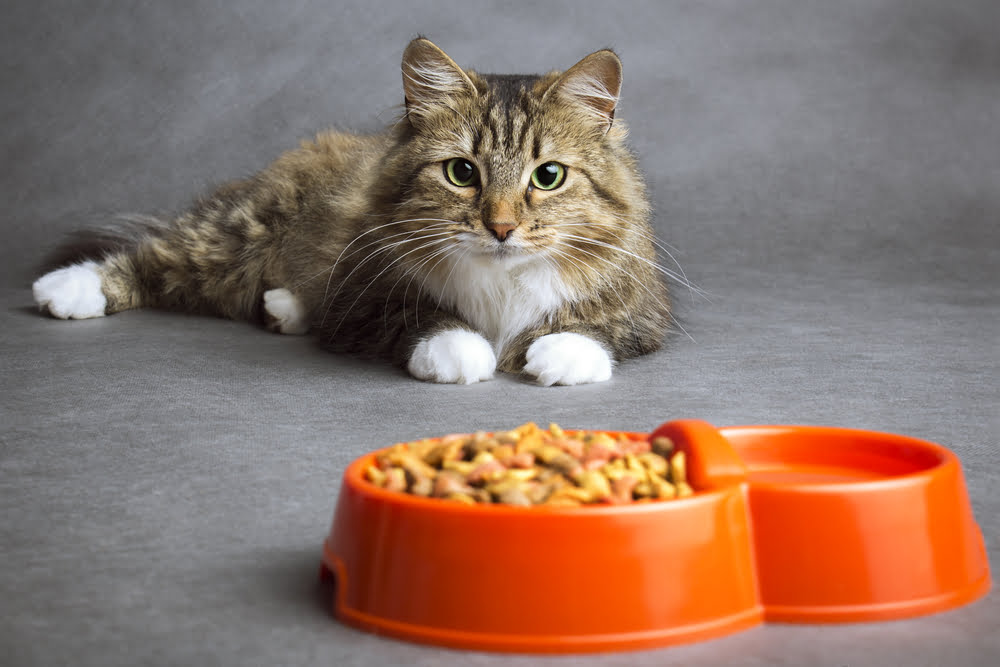
Remember those Fancy Feast commercials, where a fluffy white cat would bounce over to some delicious-looking stew served by a white-gloved butler? Unfortunately, not all cat food is as wholesome as what we see on TV. Here are a few things to consider when feeding your feline:
#1: Cats want meat! Do you think that lions or tigers are ever on the prowl for pizza? No, because what they really want is meat. Although your typical house cat is only a distant relative to these wild felines, they are still related, and similarly prefer meat. Look for pet foods that are low in carbs, and high in animal protein. Keep in mind that plant protein can cause digestive problems; cats prefer amino acids derived from animal sources.
#2: Cats have allergies too. Soy, wheat, and corn are all foods that cats might be allergic to. Try to avoid cat foods that contain these grains and legumes. Keep in mind that wet cat food tends to contain more protein and less grain, which is better for your cat. Additionally, grains can also create digestive problems for felines; their digestive tracts are more geared toward eating meat.
#3: Understand the label. Try to avoid cat foods that have “by-products.” These unidentifiable materials could be almost anything that’s semi-edible, packing your cat’s meal with some potentially unhealthy filler. While these generic foodstuffs can drive down the production costs and lower the price tag, you won’t regret paying a little more for a can that actually has a list of identifiable food.
#4: Avoid carrageenan. Take a look for this culprit-from-the-sea, which is a thickening agent made from seaweed. While it makes catfood look more bountiful, it can lead to intestinal blockages, tumors, inflammation and ulcers. [1]
#5: Avoid dyes. While we know this is true for human food, we tend to pass over it when buying food for our felines. But the truth is that that food dyes—while they make food look more appealing—are equally unhealthy for cats. Avoid food with these colorations, some of which have been shown to have carcinogenic properties. [2]
With all these things to keep in mind, you’ll definitely want to scope out what you’re feeding your furry feline friend instead of just cracking open any old discounted can of generic by-products. Take a look at some healthy, wholesome options that will keep your cat purring for years to come.
[1] https://www.healthline.com/health/food-nutrition/carrageenan
[2] https://www.pawdiet.com/articles/artificial-food-dyes-in-dog-and-cat-food/



